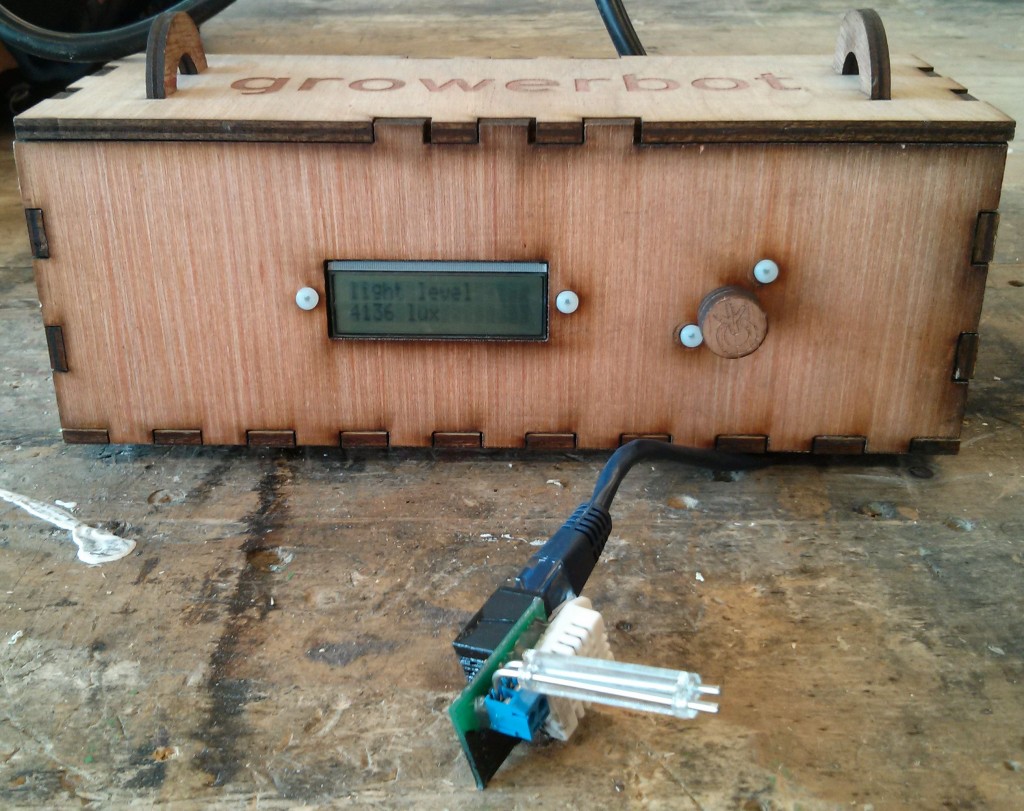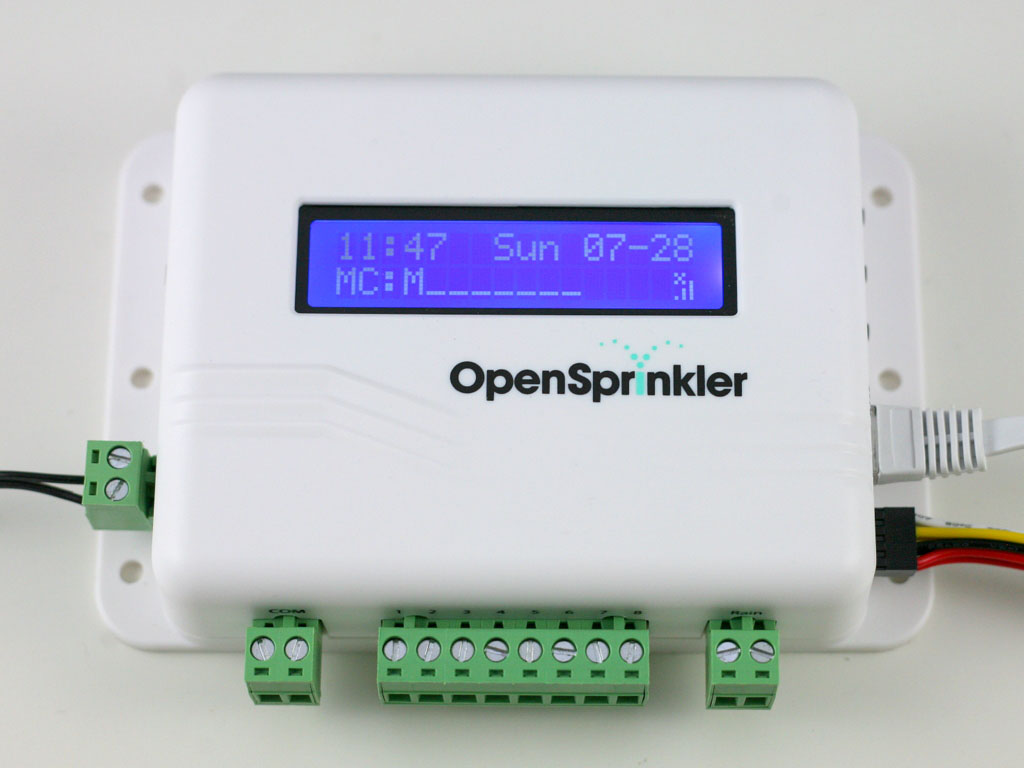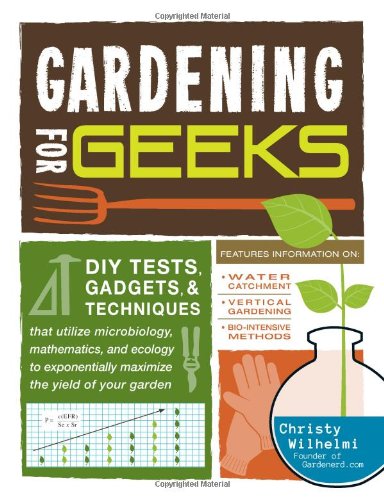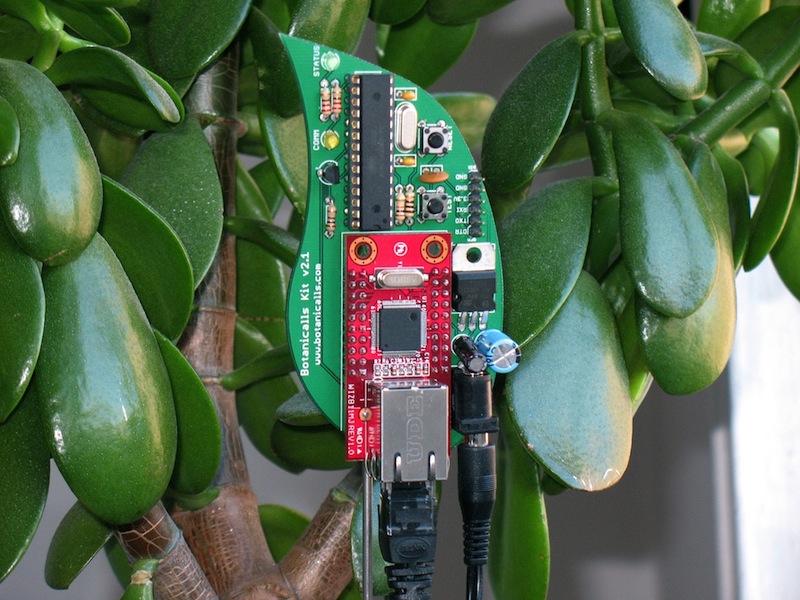Introduction
As a scientist, I am continuously seeking ways to monitor and quantify my world, including my garden. After coming across this book on Amazon, I was enticed to search out the Geek Gardening community on the internet.I am in the process of learning how to program/write in Python scripting language. Like with gardening, I am very new at it and have a lot to learn.
Fortunately, there is a growing community of those who like to automate and quantify their gardening practice. Most of the projects I have noticed involve the implementation of some variation of the open-source Arduino microcontroller or the Raspberry Pi mini-computer. The simplest configurations of this marriage of programming and gardening usually involves creating a script to detect and react to a lack of water in the gardening system. All of these projects are open source, which allows for your own creative input on how to improve them.
Gadgets
Garduino
The earliest implementation of programming to gardening that I have observed is the Garduino. There is a how-to of the Garduino is on the very awesome website Instructables, which is geared towards the "maker" community. Garduino can be modified to continuously measure humidity, temperature, and light. |
| The basic Garduino layout consists of using nails to determine soil moisture (electrical resistance of soil). A pump, controlled by the Arduino, pumps water into the garden when the soil is dry. The timing of the lights is also controlled by the Arduino board. From MAKE magazine Volume 18. |
Growerbot
For those of you not ambitious or brave enough to assemble a breadboard and program an Arduino by yourselves, there is the Growerbot, which uses the same technology, packaged in a cool wooden box. Growerbot is the child of a Kickstarter campaign. The Growerbot comes with an advantage of being wireless internet ready, which can allow you to get instant online feedback on the status of your garden. With the know-how, the Garduino concept can also be wi-fi enabled. |
| For $195, you can buy the preassembled and preprogrammed Growerbot. For $120, you can buy the unassembled version. |
Botanicalls
The Botanicalls project is a small, leaf-shaped board that measures the soil moisture of your houseplants and sends you a Tweet when the soil is dry.Ecoduino
The Ecoduino is another kit with the same intentions as the Garduino. It's main components are a pump and soil moisture probe.Open Sprinkler
Another extremely cool project is Open Sprinkler, an open-source sprinkler controller made by Ray Wang and Chris Anderson! Ray has created a ready-to-use sprinkler controller and mobile web apps so that you can adjust your sprinkler system using your phone. Open Sprinkler allows for 8 stations by itself. With an expansion breadboard, the controller can handle up to 48 stations. The community associated with Open Sprinkler has contributed modifications to the controller that allow the controller to check online weather reports to adjust watering accordingly |
| The newest preassembled edition of Open Sprinkler is $149. |
Application
After finding some of the cool gadgets and kits, I wanted to see who was actually applying the technology to grow food. Most of the automated gardens I found used aquaponics to grow their food. Aquaponics is using circulating water to grow plants, usually in a gravel or floating mat medium.This guy is passionate about aquaponics and garden automation:
Here is another inventor implementing a similar variation of aquaponics.
One of the biggest applications of geek gardening is that of the marijuana growers. They have definitely made plant growing a science, and many have embraced the route of gardening automation. Many farms are indoor gardens, where every variable (including carbon dioxide, temperature, humidity, and nutrients) is closely monitored and controlled). While I personally do not partake in the farming and growing of illicit drugs, I am impressed at the "high" bar that the growers set. With the legalization of recreational marijuana in Washington and Colorado, hopefully growers will be more forthcoming with their techniques, as many of those techniques are directly applicable to vegetable gardens. High Times included an extended article on the application of automation to indoor gardens. Tomato growers have a thing or two to learn about maximizing flowering of tropical plants.
Expanding the Concept
So, what can be done to improve the geek gardener community? There are many ideas that I have that could be implemented.
As far as I can tell, there is a slight disconnect between the indoor and outdoor technology. I think it would be cool to tie the concepts soil moisture monitoring to the mass watering capabilities of the Open Sprinkler. Also, it would be a good idea to create an automatic soil moisture meter that measures moisture at different depths in the soil at the same point. With information about the rate of water application, a multi-depth soil moisture probe could allow one to estimate water infiltration rate in the soil, and where a majority of the soil moisture resides.
Another interesting aspect of quantification would be fertilizer application. I would think that the easiest way to implement automation would be to incorporate liquid fertilizer in the watering system.
While soil moister is an important variable for maintaining plant health, it is not a direct measure of plant health. Incorporating an infrared (IR) camera into the automated system would allow the gardener to continuously measure plant health. IR cameras are increasingly becoming more accessible and are readily implemented by Raspberry Pi minicomputers.
One cool implementation of an inexpensive IR camera is the infragram photography project. The infragram photography project is another child of Kickstarter.


No comments:
Post a Comment